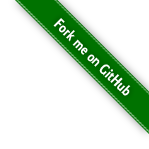#386 About Ruby
Ruby In a Nutshell: A brief overview of the Ruby programming language, its features, and application domains.
Notes
Ruby is…
- object-oriented programming language
- but supports procedural, object-oriented, and functional programming paradigms
- dynamically typed
- free and open source
- cross-platform, running on various operating systems including Windows, macOS, and Linux/UNIX variants
Ruby has…
- simple syntax
- automatic memory management
- mixins via modules
- blocks, procs, and lambdas
- a robust standard library and ecosystem
Ruby application domains include…
- web development
- automation and scripting
- data processing and web scraping
- static site generation and command-line tools
Ruby origins…
- created by the Yukihiro “Matz” Matsumoto in Japan, with first discussions on February 24, 1993
- goal of creating an object-oriented scripting language.
- Matz was dissatisfied with existing languages like Perl (which he felt had a “toy language” feel) and Python (which he did not consider a true object-oriented language).
- primary goal was to create a language that emphasized programmer happiness and productivity, making programming a fun and natural process.
- Ruby blended the best elements of several languages, including Perl, Smalltalk, Eiffel, Ada, and Lisp, to balance functional and imperative programming styles.
- Initial Release: Ruby 0.95 in December 1995.
- While initially popular in Japan, Ruby’s global recognition surged around 2005 with the release of the Ruby on Rails web development framework, which showcased the language’s power and efficiency for rapid web development.
Ruby governance…
- BDFL Model: The ultimate decision-making authority for the future direction and core features of the Ruby language rests with Yukihiro “Matz” Matsumoto. He has the final say on all essential and complex architectural decisions, even as he is less actively involved in day-to-day development.
- Core Team: The language’s development is managed by a core team of contributors. This team collaborates closely on the evolution of the language and the official reference implementation (MRI or CRuby).
- Community Contribution: Ruby has a large, vibrant, and active open-source community. Code contributions, bug fixes, and suggestions are managed through repositories (primarily on GitHub) and community discussions.
- Ruby Central: This is a non-profit organization that provides support for the Ruby community, including running RubyConf (and previously RailsConf until its final event in 2025) and managing the RubyGems infrastructure (the package manager for Ruby).
- Transition of Key Infrastructure: Recently, the ownership of the critical RubyGems and Bundler repositories was officially transitioned to the Ruby core team, led by Matz, to ensure long-term stability and alignment with the broader Ruby ecosystem. These projects continue to be managed jointly with Ruby Central.
- Open Standards: The language has also been subject to formal standardization. Its specifications were developed and accepted as a Japanese Industrial Standard (JIS X 3017) in 2011 and an international standard (ISO/IEC 30170) in 2012.
- Focus on the Programmer: A core part of the governance philosophy, instilled by Matz, is that the language design must focus on human needs and enjoyment (“programmer happiness”) rather than machine efficiency, guiding decisions about features and syntax.
